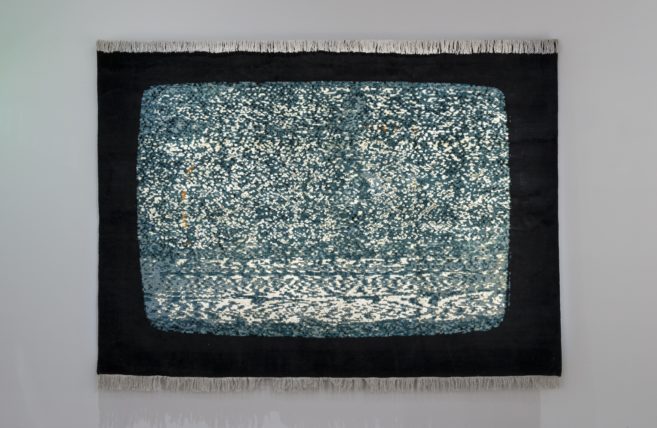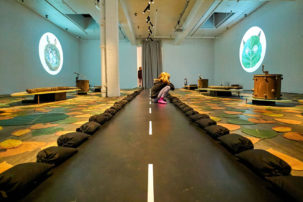This year, the Queer Arts Festival in Vancouver—themed, appropriately for Canada 150, on “UnSettled”—took a decidedly different direction, centering on art that was created and curated by Two-Spirit artists.
“Two-Spirit” is a difficult term to precisely pin down; it is often used as an umbrella term for Indigenous people of North America who are LGBTQ. It was adopted by consensus at a conference in the 1990s to replace the degrading anthropological term “berdache,” which was derived from a term roughly translated from “male prostitute.”
However, depending on who you ask, “Two-Spirit” goes beyond a gender-identity or sexual-orientation label; it can often signal a person’s position in their community and their spiritual role within it. In this way, the term harkens back to a time when, before residential schools and the Indian Act, many Indigenous cultures recognized and celebrated people who didn’t necessarily conform to labels like “man” or “woman,” or who had sexual and romantic partnerships with people of the same sex.
And so the Queer Arts Festival this year celebrated both the contemporary incarnation of an umbrella term and the role of someone who was central to their community and played a vibrant spiritual part in various cultures.
A central theme of the festival’s visual-arts program and exhibition (which ran from June 17 to 29 at the Roundhouse) wasn’t just relationships, romance, eroticism and sex—though those all played their part. More notable was that a recurring theme in many of the pieces was kinship: relationships to community, to families, to ancestors and descendants and to place.
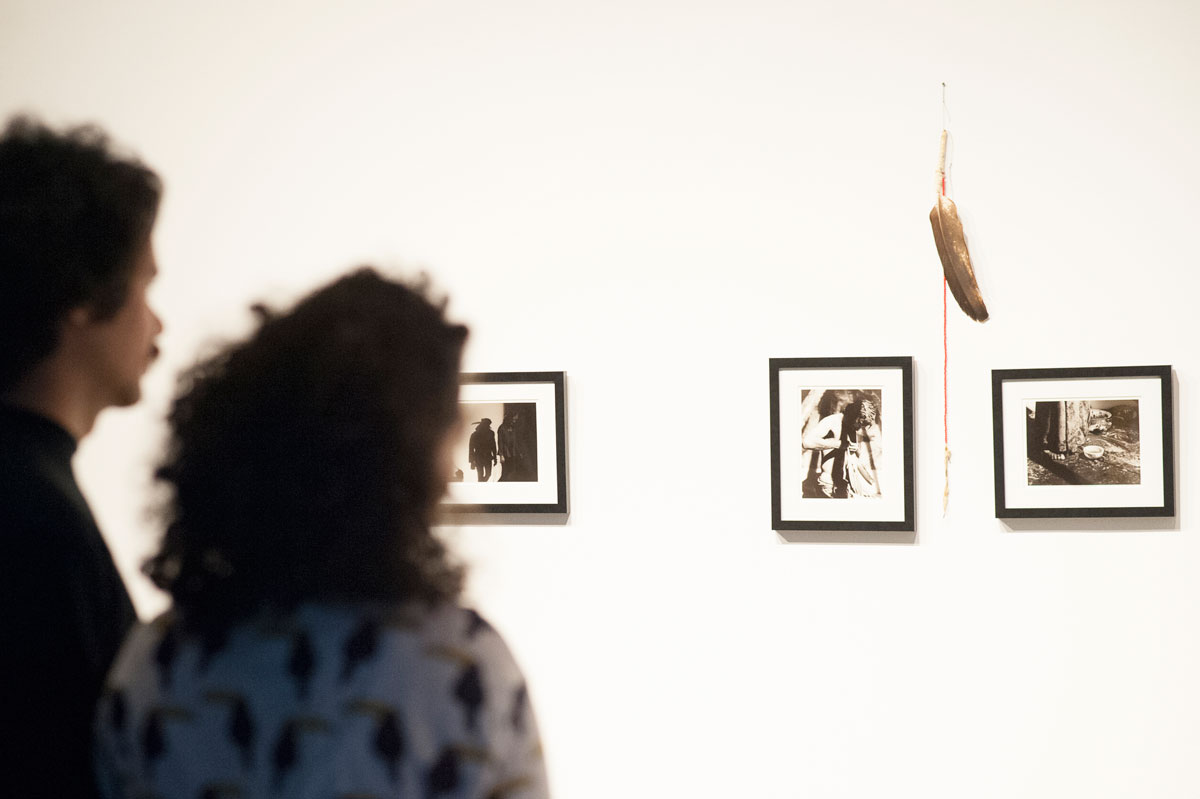 A memorial wall at the “Unsettled” exhibition of the Queer Arts Festival in Vancouver included works by Aiyyana Maracle (at left) and Ahasiw Maskegon-Iskwew (at right). Photo: Belle Ancell.
A memorial wall at the “Unsettled” exhibition of the Queer Arts Festival in Vancouver included works by Aiyyana Maracle (at left) and Ahasiw Maskegon-Iskwew (at right). Photo: Belle Ancell.
The first thing that visitors saw in the gallery were greetings in the languages of the three First Nations whose territory makes up the Greater Vancouver Area: the Musqueam, Squamish and Tsleil-waututh Nations.
Alongside those greetings was a statement from the curator of the exhibition, Adrian Stimson. Stimson, an artist from the Siksika First Nation of the Blackfoot Confederacy, which consists of the Siksika, Kainai/Blood and Piikani Nations in Canada and the Blackfeet Nation in the US, described in this statement how little representation there has been of Two-Spirit people by Two-Spirit creators. “UnSettled” offered a chance to correct this oversight and create dialogues where Two-Spirit people were not subject to an anthropological, one-directional gaze, but, instead, were instigating and controlling their own imagery and dialogue.
I had the pleasure to be both a participant in and a witness to “UnSettled,” as I was reading poetry of my own at the Lay of the Land event—part of the festival’s literary program. As a result, I was given full access to the Queer Arts Festival gallery show and events.
My first night at the exhibition, I was joined by fellow performer and friend Chandra Melting Tallow, and as two Two-Spirit artists and creators, we took in the gallery together, drinking in the visual, auditory and tactile beauty of the pieces on view.
What made this this particular exhibit remarkable was not just the diversity of themes and mediums, but the way they melded together into a larger narrative which challenged typical narratives of queer and Indigenous lives marred by tragedy, violence or hopelessness.
A particularly stunning tribute to what Anishinaabe theorist and author Gerald Vizenor dubs “survivance,” which strings together resilience, refusal and a continuity from generation to generation, were the beautiful button blanket–styled portraits of John Powell. These blankets portray the artist and his ancestors, using the traditional names for each of them.
Powell’s stunning use of a traditional medium and the labour of love in showing each family member grounded a theme of family, kinship and continuity—not topics that are usually broached when speaking about queer life, but are important to surface, considering that narratives of queer and trans family often tend to focus on being abandoned, cast off or lacking support from blood relatives. Powell’s pieces challenged these narratives of queerness as being outside of family and community and brought kinship back into the centre of conversations on Two-Spiritedness.
More conventionally thematic for a queer art showcase, but still groundbreaking and brilliant, was Thirza Cuthand’s short film about Two-Spirit dating. Here, Cuthand struck a chord with humour and grace.
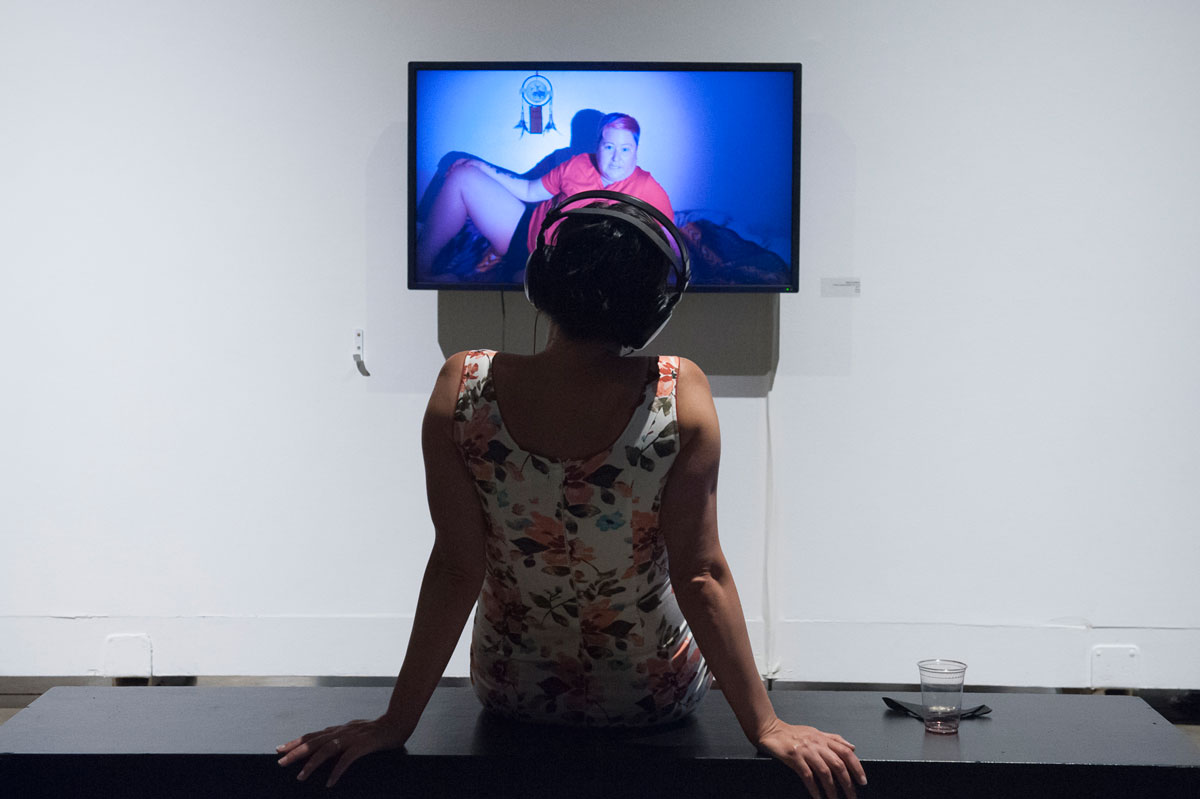 A visitor watches Thirza Cuthand’s 2 Spirit Dreamcatcher Dot Com at the opening of the Queer Arts Festival’s exhibition ”Unsettled” in Vancouver. Photo: Belle Ancell.
A visitor watches Thirza Cuthand’s 2 Spirit Dreamcatcher Dot Com at the opening of the Queer Arts Festival’s exhibition ”Unsettled” in Vancouver. Photo: Belle Ancell.
Parodying commercials for websites like eHarmony and match.com, Cuthland proposed a Two-Spirit alternative site, which, for a mere $5 a month, would provide services specific to Two-Spirit dating needs—including questions about how much student loan debt you’re in if your band failed to fund your education, your serostatus and other factors that make Indigenous queer dating more fraught with potential trapdoors or setbacks to finding “The One.” It even comes with an elder to scold a user if they get too creepy!
The challenges of being a Two-Spirit interested in dating other Two-Spirits, or even generally dating, are rarely publicly discussed, let alone gently parodied and given space for laughter. Cuthand’s short film had me chuckling in familiarity and comfort at having my experiences with dating articulated onscreen in a way I’d never seen before—certainly not in any Hollywood romantic comedy. The laughter came from a place of recognition, but also from a place of ecstasy at representation.
Overall, the exhibition for “UnSettled” was politically vibrant, and a challenge to the Canadian mythos of politeness and progress could be felt throughout the gallery. Subtle yet powerful references to the power of church and state in suppressing Two-Spirit identities and expressions were present in many of the pieces.
While I was enjoying the gallery with Chandra, I looked around at the audience. Half of them were people I already knew—fellow Two-Spirit people and members of the Vancouver queer and Indigenous communities, including fellow performers and artists. Some of the other audience members were people I would humorously describe as part of the “CBC Radio One and afternoon tea” club: older, affluent, usually white Canadians who are always eager to partake in the latest art gallery showing or cultural event. I’d seen their type before at Tanya Tagaq’s performance at the Vancouver Opera Festival, or at Lawrence Paul Yuxweluptun’s opening at the Museum of Anthropology. The others were harder to place, but seemed appreciative or at least intrigued by the art.
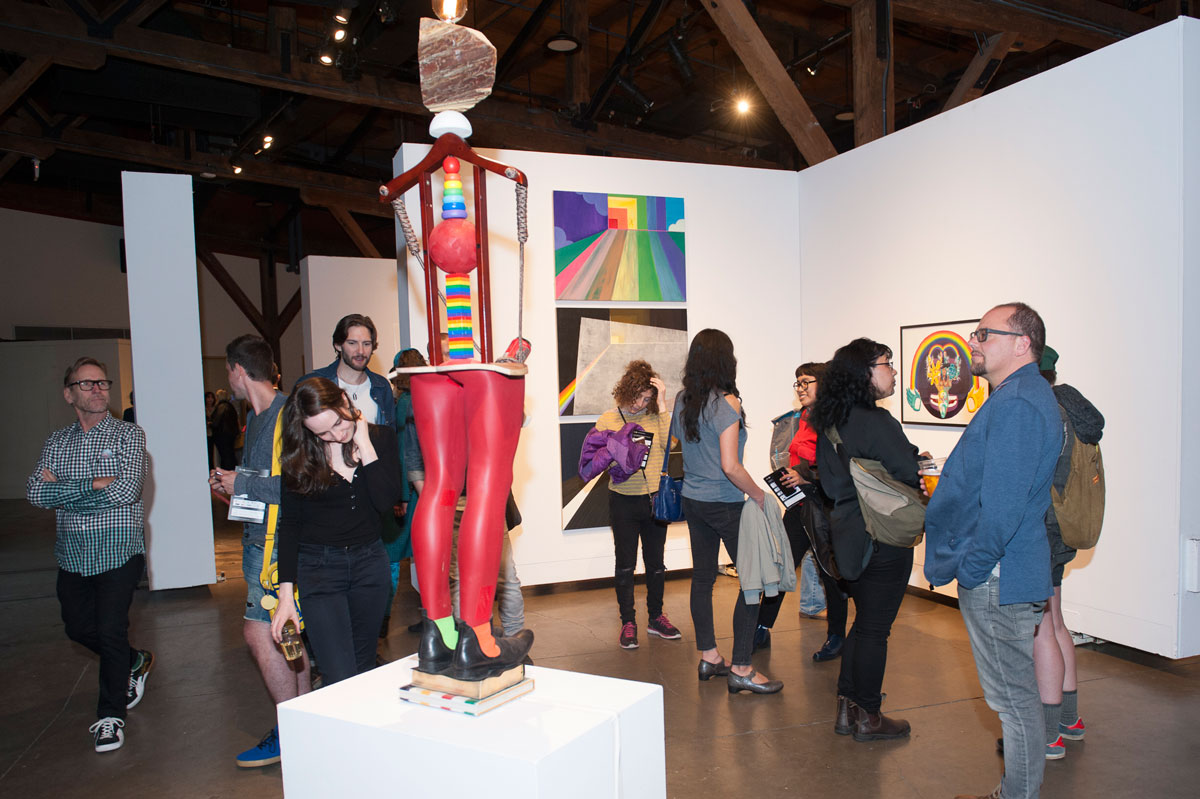 A sculpture and three paintings by Richard Heikkilä-Sawan (at left) and a framed work by Raven John (at right) at the opening party for the Queer Arts Festival’s exhibition “Unsettled.” Photo: Belle Ancell.
A sculpture and three paintings by Richard Heikkilä-Sawan (at left) and a framed work by Raven John (at right) at the opening party for the Queer Arts Festival’s exhibition “Unsettled.” Photo: Belle Ancell.
I’m always a tad skeptical, in the age of rhetoric about reconciliation, about what non-Indigenous people, and in this case, non-Two-Spirit people, were getting out of the work of Two-Spirit artists. Was there a spark of recognition of a life and experience that was so radically different from their own? An introspection on what terms like Two-Spirit mean to the people who carry them? A sense of the web of responsibility and relationality that goes beyond simply being Native and LGBTQ?
Whatever preconceptions or assumptions viewers came into the gallery with or without, the Queer Arts Festival’s “UnSettled” exhibition was sure to, as the title promised, unsettle them. It created a space of both catharsis and dialogue: a space that allowed people who have been the topics of many anthropological intrigues to speak for themselves and to challenge all present to consider what it means to be Two-Spirit in Canada today.
Leah is a Two-Spirit grad student, poet and writer who lives and works on Unceded Coast Salish Territories in Vancouver. When she finishes her master’s, she intends to spend less time writing seriously and more time writing creatively and humorously.

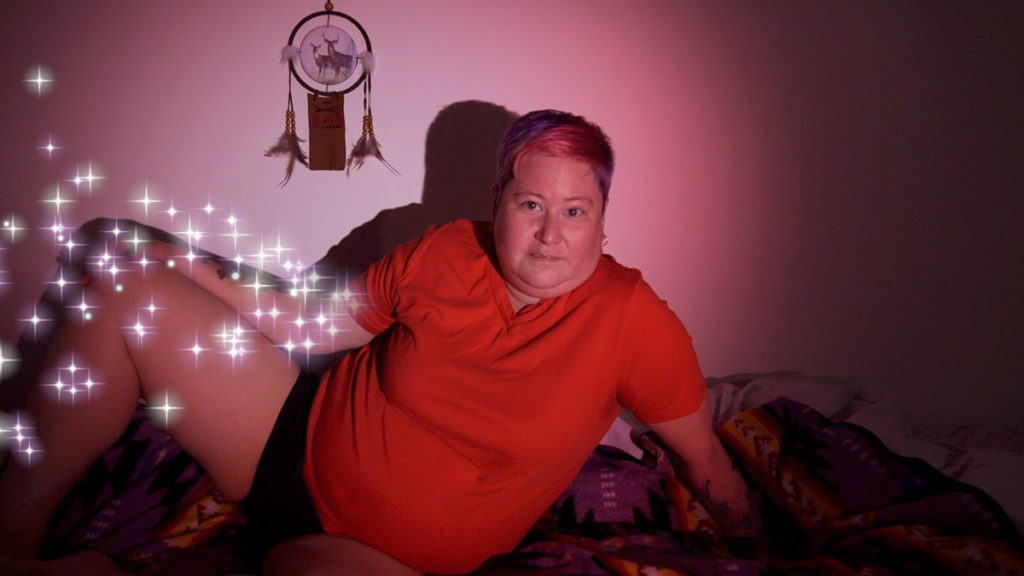 Tirza Cuthand’s short film 2 Spirit Dreamcatcher Dot Com (2017), about Two-Spirit dating, parodies commercials for websites like eHarmony and match.com.
Tirza Cuthand’s short film 2 Spirit Dreamcatcher Dot Com (2017), about Two-Spirit dating, parodies commercials for websites like eHarmony and match.com.
